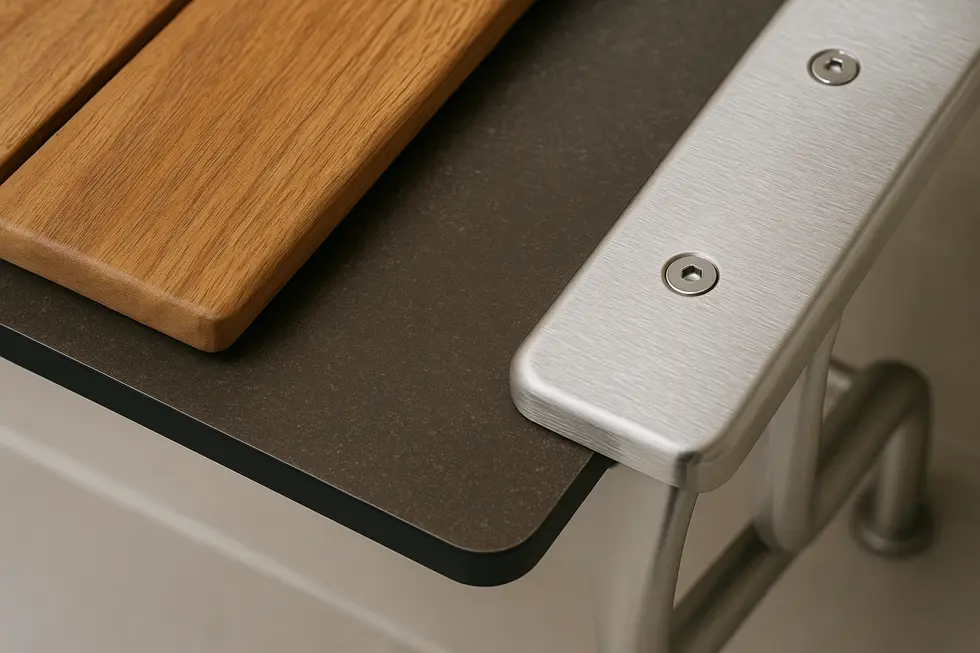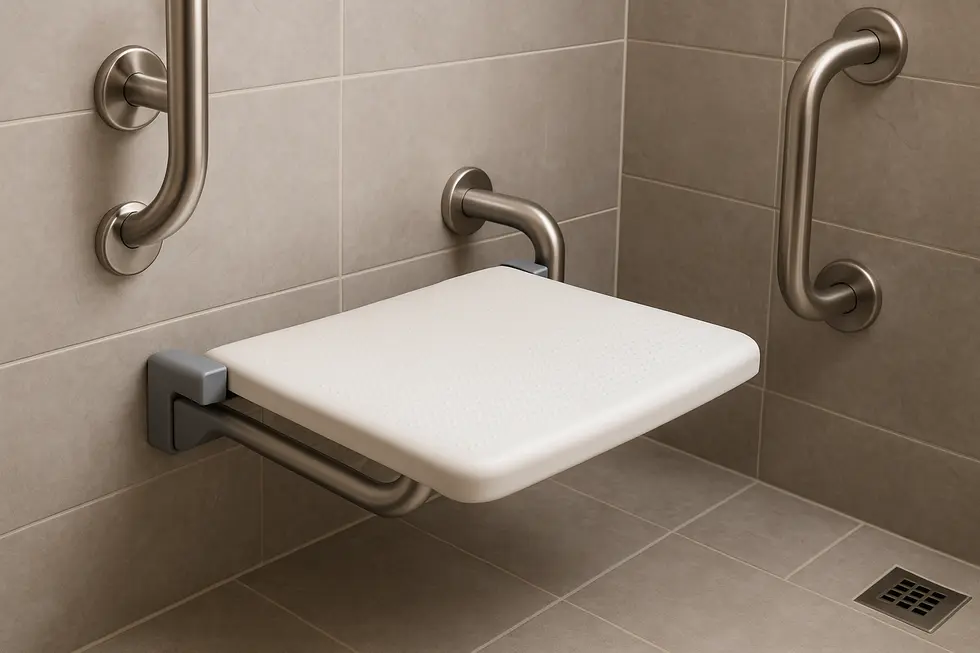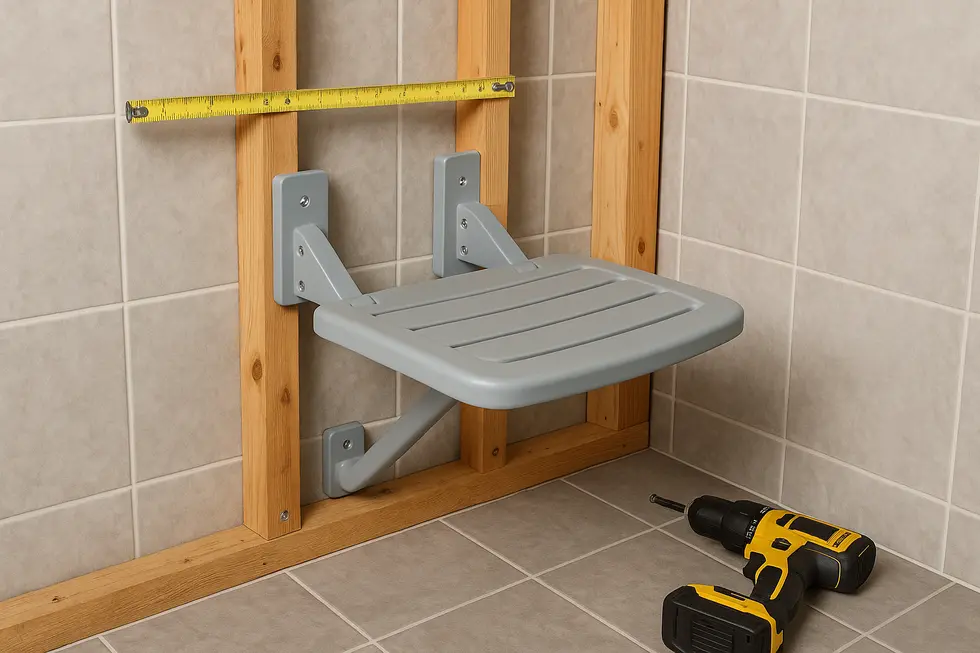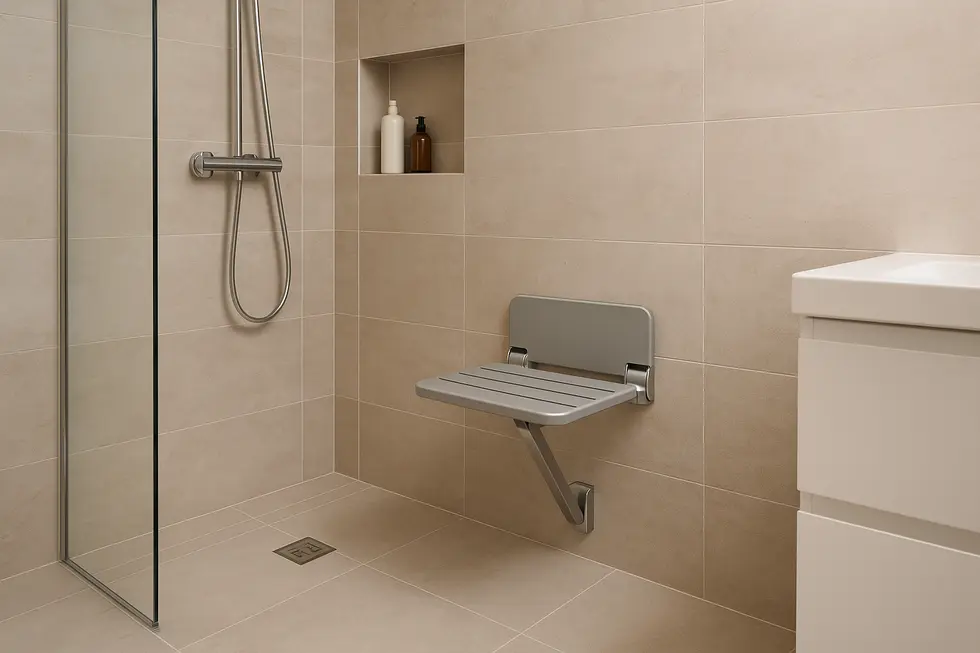Shower Seat
Choosing the Ideal Wall-Mounted Shower Seat: A Smart Family’s Guide
Selecting the perfect wall-mounted shower seat can enhance the overall safety and comfort of a family bathroom. With a blend of style, durability, and functionality, these seats offer a practical solution for families looking to improve bathroom safety and use space effectively. This article explores key elements to consider during selection, diving into materials and robustness, safety and ergonomic features, as well as pricing, installation, and user convenience. Each chapter builds on these critical aspects to offer a comprehensive guide for families in search of the ideal shower seat.
Strength Beneath the Surface: Understanding Material & Durability in Wall-Mounted Shower Seat Selection

When a shower seat is permanently anchored to your wall, the material choices hidden behind its sleek profile determine whether it will feel reassuringly solid for years or wobble after a single season. Metals form the skeleton. Stainless steel remains the gold standard; its chromium-rich composition resists rust even under daily torrents and soap residue, while single-piece welds push weight ratings toward 550 lb. Aluminum alloy rivals that strength at a fraction of the mass. Because the lighter frame exerts less torque on mounting screws, an aluminum seat can often be folded with one hand yet still survive a lifetime of steamy mornings—provided the surface receives an anodized or powder-coat seal to block corrosion.
The platform you sit on contributes just as much. Premium teak slats borrow their resilience from natural oils that repel water and mold. Unlike softer woods, teak does not need synthetic sealers, so its honey tone ages gracefully instead of flaking. Solid red oak is tougher than teak but slightly more porous; owners willing to apply a yearly marine-grade oil can still expect decades of use. Urban bathrooms chasing a crisp, clinical look gravitate toward phenolic resin or newer glass-fiber composites. These dense panels shrug off hard water stains, never warp, and remain pleasantly cool to the touch, making them ideal for households that prize zero maintenance.
Durability is also engineered into the connection points. Look for seats whose hinge pins are stainless steel, not plated brass, and whose wall brackets align with 16-inch stud spacing. Matching material strengths prevents galvanic corrosion, the hidden electro-chemical reaction that can erode fasteners long before the seat surface shows wear. Textured finishes or embedded silicone ribs add slip resistance without trapping grime.
Finally, remember that durability is measured as much by safety as by lifespan. A seat rated for 450 lb under laboratory conditions may still fail if moisture creeps into an untreated screw head. Regularly test the folding action and inspect for surface pitting; users who follow the simple maintenance checklist outlined in our guide to durable folding wall-mounted seats can extend service intervals dramatically.
For an in-depth look at how marine-grade alloys outperform basic steel in salt-spray simulations, see this peer-reviewed analysis: https://www.sciencedirect.com/science/article/pii/S0010938X19305548
Built-In Security and Comfort: Assessing Safety and Ergonomic Engineering in Wall-Mounted Shower Seats

When we compare wall-mounted shower seats, every standout model first convinces us it is safe—and then makes us forget we are sitting on hardware at all. Load rating sets the tone; frames that survive 450-550 lb static tests exceed the ADA baseline and instill confidence for users of every body type. That strength usually comes from stainless steel tubes or anodized aluminum plates that shrug off years of humidity and soap, verified by salt-spray corrosion tests borrowed from marine industries. Yet raw muscle is only half the equation.
Textured seating surfaces address the moment water turns a shower into a slip hazard. Some brands rely on naturally grippy teak whose tight grain and oil content resist mildew without chemical coatings; others mold shallow chevrons into phenolic panels or bond memory-PU pads that stay warm in winter and cool in summer. The best of these pads integrate micro-drain channels so puddles never form beneath the thighs.
Mounting hardware is where safety and ergonomics intersect. Factory-spaced brackets align with 16-inch on-center studs, letting installers bury four or six lag bolts into solid lumber rather than brittle tile. Inside the hinge, counter-balanced arms and nylon washers create a slow, pinch-free fold; users with reduced grip simply nudge the seat and gravity handles the rest. This same hinge folds the deck to less than three inches off the wall, freeing wheelchair turning radius without sacrificing readiness for the next shower.
Comfort emerges from adjustability. Several contemporary benches allow the seat pan to be mounted at 17, 19, or 21 inches high, mirroring the range of standard mobility-aid chairs so knees sit at a gentle right angle. Rounded front edges prevent pressure points, and slight rearward tilts channel water away from towels or clothing.
For a deeper dive into installation torque values and stud-finding tips, our guide on safety guidelines for wall-mounted shower seats expands on practical details. Designers that harmonize these structural and ergonomic cues not only meet but often surpass regulatory benchmarks such as ADA Section 608, ensuring every shower remains a place of independence and relaxation (see the official ADA advisory at https://www.access-board.gov/ada/).
Balancing Budget, Setup, and Everyday Ease: What Matters Most in Wall-Mounted Shower Seat Selection

Price may be the first specification shoppers notice, yet it rarely tells the whole story. Most well-reviewed wall-mounted shower seats cluster in a surprisingly narrow band—roughly $83 to $90—because manufacturers have learned to pair affordable aluminum or stainless frames with either solid hardwood slats or slim phenolic panels. Within that range, the extra dollars usually buy user-centric upgrades: an integrated grab bar, discreet lift-assist hinges, or a thicker memory-foam cushion. When you see a seat priced near the top of the band, look for those enhancements before writing it off as costly; often the comfort and safety dividend outweighs a slight bump in upfront spend.
Of course, even the strongest seat is only as reliable as its installation. Leading models ship with factory-spaced holes that marry neatly to 16-inch on-center studs, sparing DIYers the headache of measuring and re-drilling. Concealed stainless brackets add a double benefit—corrosion resistance in humid enclosures and a clean, floating aesthetic. Those unwilling or unable to open tile and hit studs can still choose a professional service, but many homeowners find confidence in a clear set of instructions and a simple stud finder. For a more detailed walkthrough, our illustrated step-by-step installation guide demystifies the process without resorting to technical jargon.
Once mounted, day-to-day convenience becomes the decisive factor. Textured seating surfaces and rounded edges reduce slip risk, while anti-pinch hinges let the platform fold flush with a gentle nudge—crucial for users with reduced grip strength. Quick-drain slots carved between wood slats or molded into phenolic prevent puddles that could harbor mildew. Cushions, when offered, now use closed-cell foams that dry rapidly and resist odor. The result is a seat that disappears when not required yet feels reassuringly solid when weight is applied, routinely supporting 250–550 lbs without flex.
Taken together, reasonable pricing, straightforward installation, and thoughtful ergonomics explain the enduring popularity of wall-mounted seats. They prove that safety gear can still respect both budget and bathroom style while quietly meeting the accessibility principles outlined in the latest ADA residential guidelines.
Final thoughts
Wall-mounted shower seats are versatile additions to any family bathroom, offering a combination of safety, durability, and comfort. By thoroughly evaluating materials, safety features, and installation considerations, families can make an informed decision. The goal is to find a balance between aesthetic preferences and functional needs, ensuring a safe and pleasant bathing experience for all family members.
Experience a new standard of clean with PEGABidet—designed for comfort, safety, and independence. Join thousands who trust us to make personal care simple and dignified. Contact us at contact@pegabidet.com
About us
PEGABidet is a brand owned by L.A NEXTGEN LLC, based in California. We design intuitive, hygienic, and accessible bathroom solutions that prioritize safety, dignity, and independence. Our mission is to make personal care effortless and empowering for people at every stage of life.

